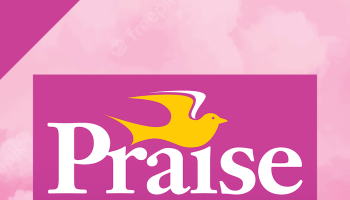Last week, the Food and Drug Administration warned 17 food companies that the marketing claims on some of their products weren’t in line with government rules. If you buy ice cream marketed as having “zero grams trans fat,” for example, but it still contains a significant amount of saturated and total fat, that information is supposed to be prominent. The letters are part of the FDA’s move to address the confusion surrounding front-of-package claims, an effort that will include a standardization of how this information is presented.
Until it’s all sorted out, there are plenty of food labels that are difficult to decipher, say dietitians and nutrition experts. Here are some claims that warrant a closer look before you buy:
1. Foods claiming to “support your immune system.” A food can carry this claim if it contains certain levels of nutrients–including vitamins C and A–that, when deficient in the diet, can negatively affect the immune system. But that doesn’t mean that adding those nutrients to an already adequate diet will supercharge your immunity or protect you from the flu. Moreover, it doesn’t guarantee that the food making the claim is healthful by other measures or unique in its powers. Green Giant has an “Immunity Blend” variety of boxed frozen vegetables, a combination of cauliflower florets, carrots, and dried cranberries. All veggies and fruits contain antioxidants, not only this particular mixture, points out Lisa Sutherland, a research assistant professor of pediatrics at Dartmouth Medical School. (The Immunity Blend also includes a butter sauce and added sugar.)
Another example of such a claim: Kellogg’s Cocoa Krispies, which came under fire last year for a yellow front-of-package banner proclaiming that the cereal “helps support your child’s immunity,” referring to the presence of vitamins A, B, C, and E. It did indeed have those nutrients, but 40 percent of the cereal’s calories come from sugar. (The San Francisco city attorney demanded proof of an immune-system boost, and Kellogg dropped the claims.) The bottom line: The best way to get antioxidants is through a diet rich in a variety of fruits and vegetables, no special combo required.
2. Sugary foods that advertise their virtues. Cocoa Krispies isn’t alone; plenty of sugary cereals and other foods tout the presence of other nutrients. It’s not that sugar is evil, but it is caloric, and you shouldn’t be fooled by the “health halo” that hovers over some foods pointing out the presence of other nutrients. Marion Nestle, a professor of nutrition at New York University, points out Fruity Pebbles cereal, which does indeed contain the vitamin D prominently advertised on the front of the package. In fact, it contains 25 percent of the day’s recommended intake of vitamin D (40 percent if you pair it with a half cup of skim milk). Physicians and public-health authorities generally agree most of us need more vitamin D, and it can be tough to find in foods. But 37 percent of Fruity Pebbles’ calories come from sugar, which may not be what parents are looking for in a cereal. (And it does not, despite the name, include any fruit.)
Kids’ juices are also famous for this, says Sutherland. The front of Honest Kids Super Fruit Punch’s pouch notes that it includes no high-fructose corn syrup. It does, however, include sugar-10 grams, or 40 calories, of it. And the American Academy of Pediatrics says that fruit juice can be a part of a healthful diet when consumed in moderation (up to 4 to 6 ounces per day) but that it is no better than whole fruit for kids. Juice drinkers miss the fruit’s fiber entirely.
3. Treats that are “made with real fruit.” There may be plenty of good reasons to eat snacks making this claim, but the fruit content is rarely one of them. That phrase “would lead one to believe you are getting a dose of natural vitamins, minerals, and fiber,” writes Sari Greaves, a registered dietitian and spokeswoman for the American Dietetic Association, in an E-mail. To find out how fruit-centric the snack really is, she suggests checking the ingredients, which are listed in descending order by weight. So the first few ingredients “tell all,” she says.
Applying this advice to Nutri-Grain Strawberry Cereal Bars, which bear the “made with real fruit” claim, you find that the filling’s first two ingredients (high-fructose corn syrup and corn syrup) are equivalent to sugar. Then comes “strawberry puree concentrate”–that’s where the fruit comes in–followed by glycerin, more sugar, water, and so on. In fact, when it comes to dietary exchanges (a system used by diabetics and others looking to control their intake of certain food groups or calories), the label says one bar provides 1½ carbohydrate exchanges and ½ fat exchange but no fruit exchange, which means it isn’t equivalent to even a half serving. If your goal is to eat more fruit, you’re better off with the real thing, says Greaves.
4. Food “made with whole grains.” In its recent report “Food Labeling Chaos,” the Center for Science in the Public Interest called on the FDA to require products making this claim to “disclose what percentage of total grains are whole.” Right now, foods can bear a Whole Grains Council “stamp” on the packaging if they have at least half a serving of whole grains (three full servings per day are recommended), but companies are not permitted to indicate what percent of the grains in most foods are whole. Why? Cynthia Harriman, director of food and nutrition strategies at the Whole Grains Council, says in an E-mail that for most foods, the FDA only permits the packages to cite components as a percent of the total weight of all ingredients. So, Harriman says, a loaf of bread made with half whole grains and half refined grains wouldn’t be allowed to say it was “50 percent whole grain”; that claim would be possible only if 50 percent of the total weight of the bread were whole grains. One exception: If all the grains in a given food are whole, the packages can bear a “100% Whole Grain” stamp. Less than that, and it becomes tough to decipher; the Whole Grains Council has its own suggestions, including looking for the word whole in the ingredient list and learning which ingredients (like enriched flour) never connote whole grains.
And as a general rule, if you’re really trying to eat more healthfully, focus on the overall health profile of a food rather than a specific claim or ingredient. That means examining the nutrition and ingredient labels to see if a food really has the qualities you’re looking for–or the ones you aren’t.
5. Products claiming they’re “natural.” The CSPI’s recent food labeling report wants the FDA to crack down on this claim and to prohibit the term’s use in foods made with high-fructose corn syrup or artificial ingredients. Here’s an easy rule of thumb: Ignore the claim entirely. “Natural” is virtually meaningless; not everything made in a lab is harmful, not everything that pops up in the natural world is beneficial (E. coli is perfectly natural, after all), and distinguishing between the two is often an exercise in splitting hairs rather than a way of determining what you really want to know: How healthful is this food?
from usnews.com
















